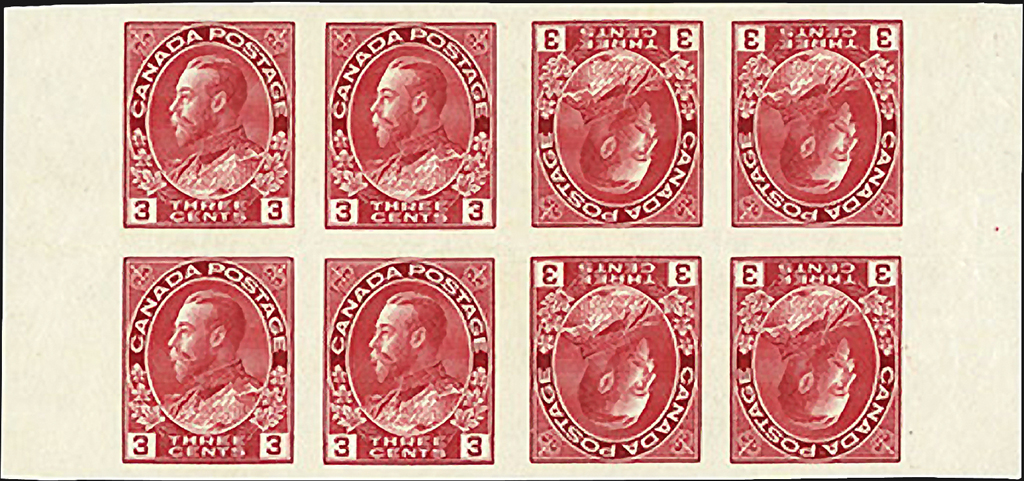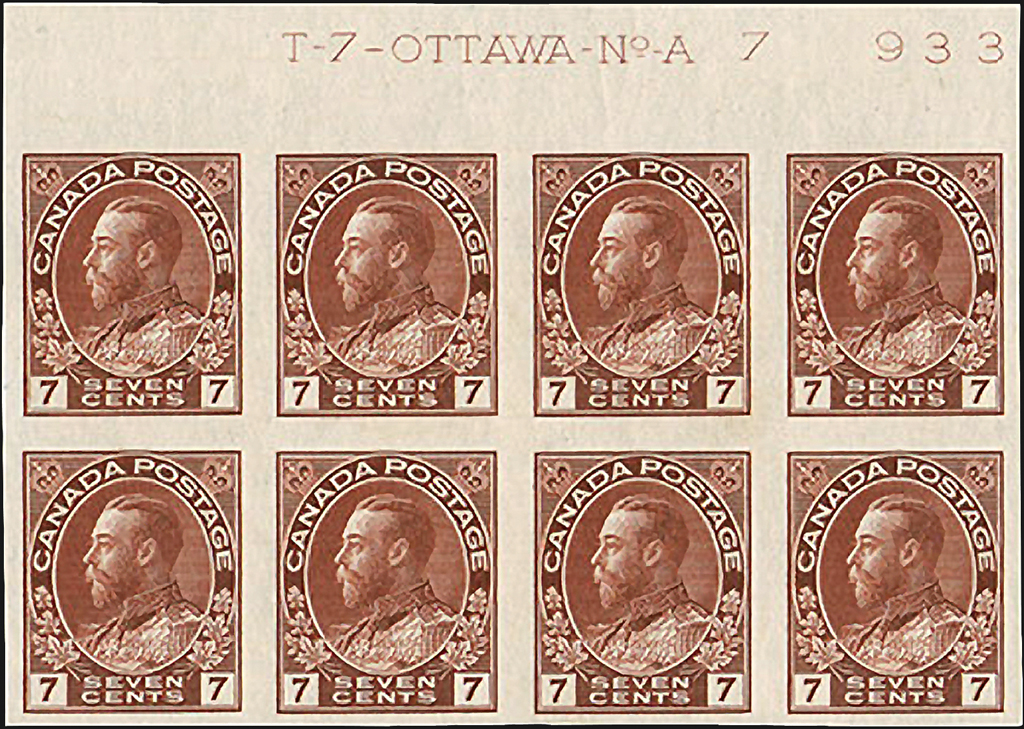Auctions
Top "Admiral" issues and varieties in March Brigham auction
In Toronto on March 6-7, Brigham Auctions continued its multipart sale of the Canada collection belonging to its owner, Ron Brigham.
Earlier portions of the sale covered stamps of the 19th and early 20th centuries, while the latest installment comprised stamps of the King George V "Admiral" issue, the definitive series used from 1911 to 1928 showing the monarch in naval uniform.
Beginning with die proofs and continuing with multiples, plate blocks and varieties, the Admirals collection illustrated one of the main draws of the set for collectors: the great number of printing plates used to produce the stamps.
"The major reason for the multiplicity of plates was the difficulty of finding good steel to prepare the plates as a result of World War I," noted Brigham in the introduction to the sale catalog.
"Because of early wear of the plates, the shortage of paper and its quality during wartime, and the need to replace the German dry inks used in the early printings (1911-1914), the Admiral issue has become the most popular collecting and study area of 20th Century Canadian philately," the catalog continued.
Distinguishing wet and dry printing methods of the Admiral issue further adds to the subject’s complexity.
The top item was a complete set of imperforate top margin imprint blocks of eight, for all the denominations from 4¢ to $1 (Scott 110a-122a).
Related posts from Linn's.com:
- Brigham auction March 6-7 offers Admirals
- Canadian back of the book and full panes offered in third Brigham auction Nov. 22
- Brigham Canada auction series begins with Large Queens, including the 2¢ on laid paper
- Auction Roundup: Canada dominates February auction news
Lightly hinged only in the top margins, leaving the stamps themselves pristine, the set sold for $149,500 Canadian, or about $120,000 U.S., including the 15 percent buyer's premium that Brigham adds to all lots.
A set of three imperforate, unsevered, tete-beche booklet panes made for a visually striking lot, with the left and right panes head-to-toe in relation to each other.
The 1¢ and 2¢ panes comprised 12 stamps, and the 3¢ had eight stamps (Scott 105c, 107d, 109b). The lot sold for about $43,750.
Equally striking to see was a group of gutter blocks of 12, from sheets intended to be converted to coils of the 1¢, 2¢ and 3¢ stamps, with the unsevered stamps perforated 8 vertically but imperforate between (varieties of Scott 126, 128 and 130). The lot brought about $39,000.
Not every lot was as pricey. A normal imprint block of eight of the 1¢ yellow green, with perforations (Scott 104), inscribed "OTTAWA – No. A152" with all but one stamp never hinged, went for $65.
More from Linns.com:
USPS announces Water Lilies envelopes details
Commission OKs adding new forever stamps
Staff changes at APS Internet sales force restructuring
Monaco celebrates birth of royal twins
Vol. 1 of 2016 Scott Standard eCatalogue available
Keep up with all of Linns.com's news and insights by signing up for our free eNewsletters, liking us on Facebook, and following us on Twitter. We're also on Instagram!
MORE RELATED ARTICLES
Headlines
-
US Stamps
Oct 7, 2024, 3 PMMcMurtrie dismissed as APS education director following Sept. 21 arrest
-
US Stamps
Oct 7, 2024, 12 PMVasiliauskas named president of Mystic Stamp Co.
-
US Stamps
Oct 6, 2024, 5 PMApgar souvenir card available
-
US Stamps
Oct 6, 2024, 4 PMFirst Continental Congress and U.N. stamps receive Scott catalog numbers








